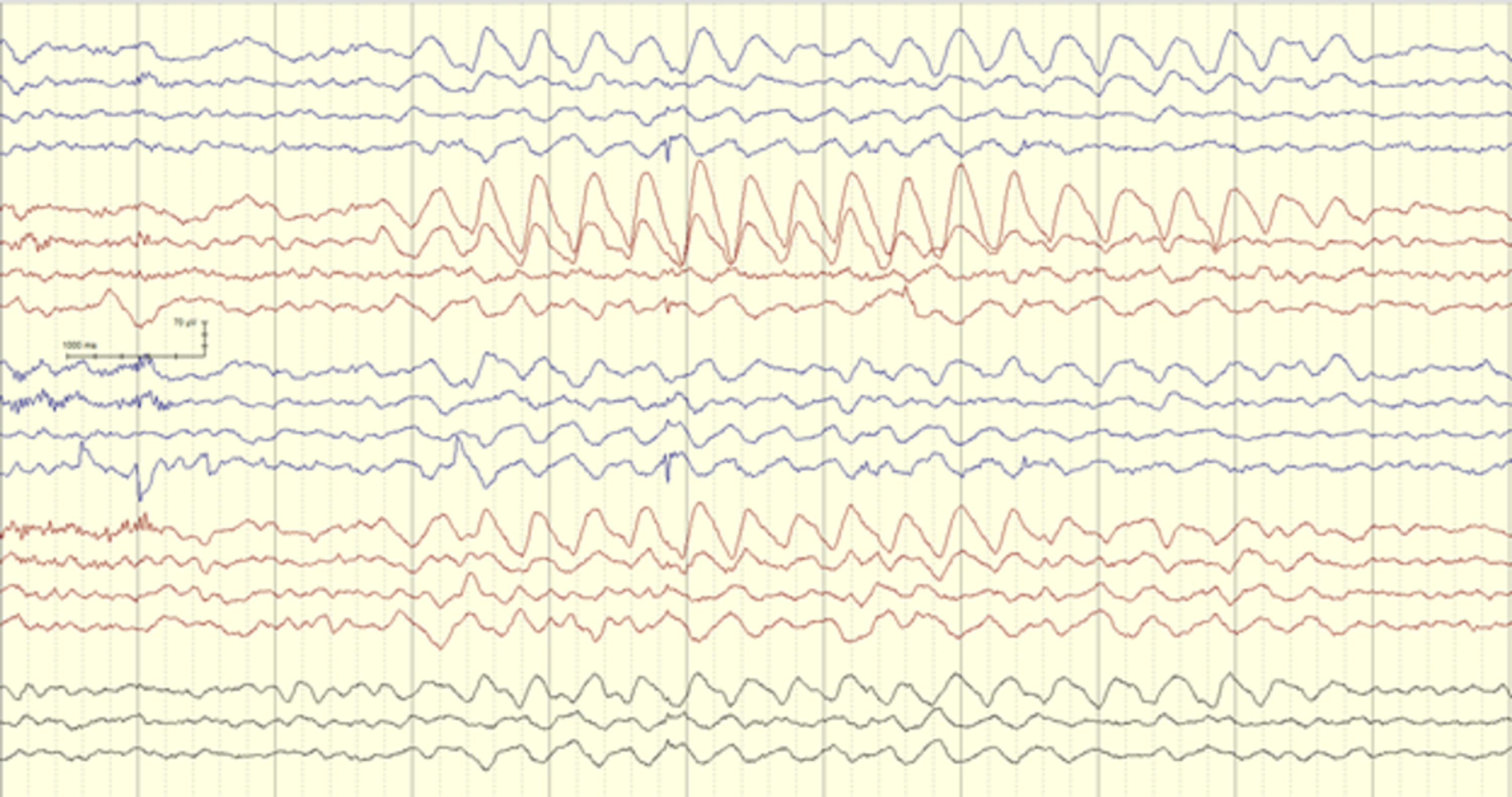

Sometimes, a prominent alpha-range frequency of 8 to 12 Hz is seen over the central head regions, termed the mu rhythm ( Figure 9). In example (b), a very prominent frontally maximal beta rhythm is noted in this slightly drowsy 32-year-old woman, very likely as (more.) In example (a), generalized excess beta activity is shown in a modified alternating bipolar montage. There are several variants of the alpha rhythm, and they include temporal alpha, characterized by independent alpha activity over the temporal regions seen in older patients, frontal alpha, consisting of alpha activity over the anterior head regions, which may be related to drugs, anesthesia, or following arousal from sleep (Note: When invariant and unreactive to any stimuli in a comatose patient, this variant is pathological and represents an alpha coma pattern.) or paradoxical alpha, which is a return of alpha activity with an alerting stimulus or eye opening.Įxcess beta activity. While some normal patients lack well-formed alpha activity, the frequency, symmetry, and reactivity of alpha merits special attention and comment in any EEG report.
#Firda eeg generator#
The alpha generator is thought to be located within the occipital lobes. Alpha frequency normally remains symmetrical, so if one side is slower than the other, an abnormality of cerebral functioning exists on the slower side. Alpha amplitude is usually highly symmetrical, although it may be of somewhat higher amplitude over the right than left posterior head regions (greater than 50% amplitude asymmetry is considered abnormal, with the abnormality usually on the side of the lower amplitude). The alpha rhythm, or alpha, is attenuated in amplitude and frequency and often completely ablated by eye opening. When the patient is relaxed with eyes closed, the background is usually characterized by the posteriorly dominant alpha rhythm, also known simply as the posterior dominant rhythm.

Healthy adults typically manifest relatively low-amplitude, mixed-frequency background rhythms, also termed desynchronized. See Appendix 4 for representative common EEG artifacts seen during wakefulness. Another common artifact during the waking EEG is caused by swallowing and the related movement of the tongue, which similar to the eye is a dipole and causes a slow potential with superimposed muscle artifact. Since the positivity of the cornea rotates upward toward frontal electrode sites, a transient positivity, then negativity is recorded there.

This occurs because the eye is a dipole, relatively positive at the corneal surface and negative at the retinal surface, and the eye moves characteristically upward during a blink according to Bell phenomenon, resulting in a moving charge and potential change. Extremely large-voltage, diphasic potentials in frontal regions result from blinks. Rapid eye movements (REMs), resulting from saccades and spontaneous changes of gaze, may be seen as small, rapid deflections in frontal regions. Most notable is the presence of low-amplitude, high-frequency activity arising from scalp muscles, often frontally dominant but seen throughout the tracing. Artifacts are common during the wakeful EEG, and one of the first hurdles of EEG interpretation is distinguishing these from cerebral signal.


 0 kommentar(er)
0 kommentar(er)
